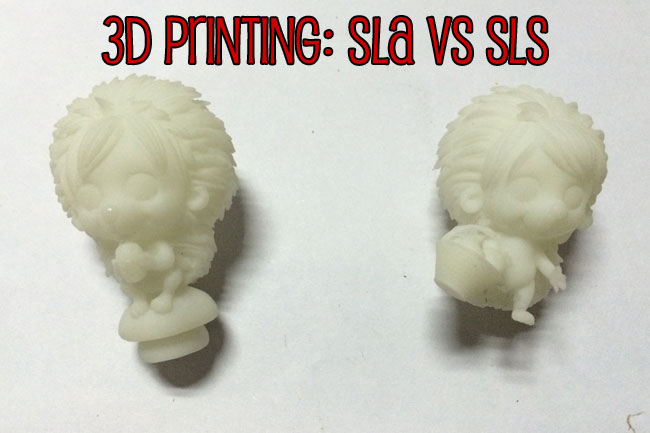When you’re getting ready to get your design made into a prototype, choosing your method is an extremely important step in the process.
If you’re reading this article, you’ve probably already settled on 3D printing…or you’re at least leaning in that direction. Two of the 3D printing services we offer are SLA and SLS.
Before we talk about the advantages or disadvantages of each, let’s talk a little bit about what each process is and how it works.
SLA
SLA, or stereolithography, is the most common type of 3D printing. It was invented in 1986 by Chuck Hull, making it the oldest of the 3D printing methods.
Items printed in this way are created by shining an ultraviolet beam of light into a vat of liquid photopolymer (plastic resin that can be hardened by UV rays). Each time a layer is cured, the object is lowered slightly so that the next level can be built.
Creating a 3D print this way means that it needs a supporting structure, which is usually automatically generated within the 3D printer’s CAD software.
SLA can be pretty detailed, but usually doesn’t create functional parts. And since the plastic hardens under UV rays, objects that are printed using this method can’t be left out in the sun—they’ll become brittle and finally break.
SLS
SLS, our other option, is an acronym for selective laser sintering. This method, as you can probably guess, uses a laser to sinter (heat until it solidifies) powdered material.
This process was developed in the late 1980s by a pair of researchers at the University of Texas at Austin in a project sponsored by DARPA.
Although SLS creates a much stronger item than SLA and can be used to make functional prototypes, it won’t be very pretty. SLS has a rough surface finish that doesn’t make it aesthetically pleasing.
So if you want to decide between SLS vs SLA, here are a few key differences:
| SLA | SLS | |
|---|---|---|
| – smooth looking finish | – rough finish | |
| – not very durable, will crick over time if exposed to sunlight | – not for display prototypes | |
| – great for display items, not for functional models | – very durable, good for testing the functionality of the design | |
| – slightly cheaper than SLS | – if you think SLS might be the right 3D printing method for you, consider CNC machining—it will give your prototype a much nicer finish. |
And if you’re ready to get a quote, head over to our quote page to send us your design!



